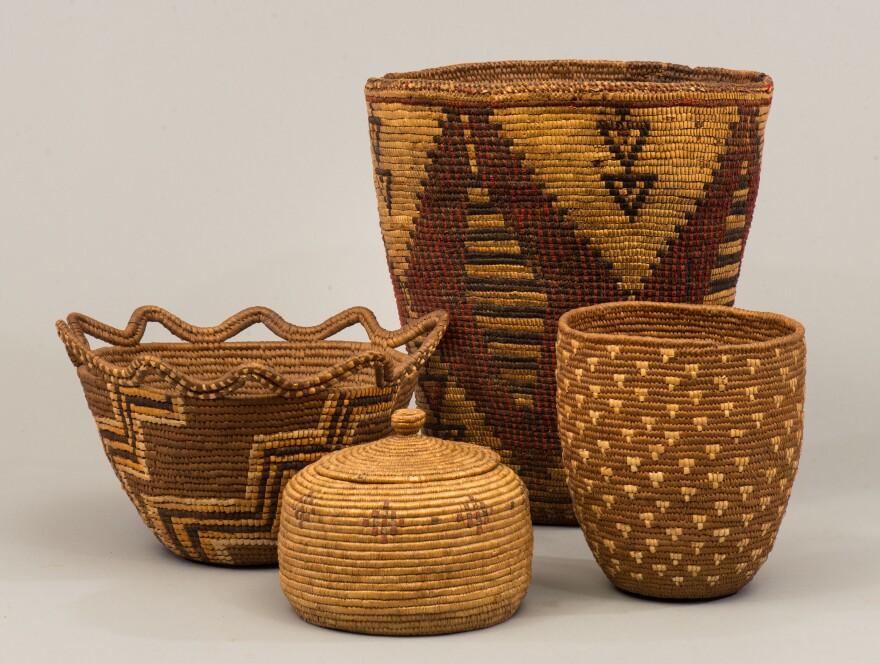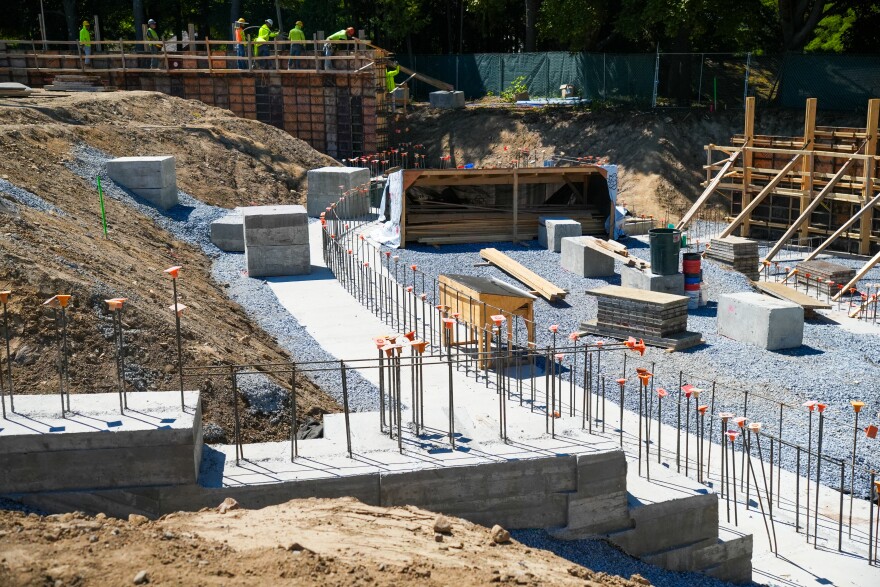The largest art and history museum in northern New England has officially begun building a new center for a major collection of Native American items.
Vermont’s Shelburne Museum has been planning the Perry Center for Native American Art, a $14 million project, for seven years.
When it’s completed, it’ll house more than 500 items from nearly 400 Indigenous nations.
The sensitive nature of Native American items — which European-descended Americans have a history of looting, then displaying — creates extra legal and ethical responsibilities for institutions like the Shelburne Museum.
While the museum has reached out to hundreds of Indigenous nations and undergone a long consultation process, it faces criticism from the W8banaki Nation for whom the museum has chosen to represent Abenaki peoples.
Perry Center origins
The Perry Center for Native American Art began as an idea in 2018, when Teri Perry approached Shelburne Museum Director Tom Denenberg about housing a collection of Indigenous items from her late husband Tony Perry, who opened several nightclubs and restaurants in Vermont.
He added that the collection consists of beadwork and other items from the late 19th and early 20th centuries — after the U.S. forcibly removed Indigenous peoples to reservations — made by Plains and Southwest Indigenous peoples to sell to East Coast visitors.

The Shelburne Museum also plans to house in the Perry Center its existing collection of Indigenous items, mostly Tlingit baskets, from the late museum founder Electra Havemeyer Webb. The museum removed those items from public display in the 1990s, around the time when a federal law called the Native American Graves Protection and Repatriation Act began to require museums to consult with Indigenous nations about Native American items in their collections.
Denenberg said the museum must approach its Native American collection quite differently from, say, European paintings or other art made explicitly for sale.
“It's not our collection,” he said. “We're stewarding the material.”
Requirements of federal law
Museums and other institutions are required to consult and ultimately get consent from federally recognized Indigenous nations in the U.S. to display Native American items because there is a long history of culturally sensitive items, as well as human remains, being stolen in the first place.
Association on American Indian Affairs CEO and attorney Shannon O’Loughlin, who is a citizen of the Choctaw Nation of Oklahoma, said items buried with the dead have frequently been looted from graves — and then have been categorized as art and displayed in museums.
“A private collector, an organization or museum, is not going to know whether an item is an art piece or an object of cultural heritage, unless they have a relationship with that Native nation and understand how that nation defines its own cultural heritage,” she said.

At the Shelburne Museum, Denenberg, the director, said they have contacted 316 tribes so far for the Perry Center’s Native American Collection.
During these consultations, if the items are determined to be human remains, funerary, sacred or cultural patrimony, Indigenous nations can ask for them to be returned.
So far, Denenberg said there have been just a few repatriated items.
The Shelburne Museum recently notified 13 Indigenous nations about human remains from at least one individual, plus related items, that were given to the museum in 1960. The nations can now request repatriation of the remains and items.
It’s all from a box of material with ceramics, wood fragments, stone fragments — and what Denenberg said the museum only recently realized was a cranium.
He added that these items were never on view in the museum, and that they are separate from the collection going into the Perry Center.

Talking circles
Denenberg said the planning process for the new Perry Center for Native American Art has involved a series of “talking circles” with the Native-owned Two Row Architect firm and around 90 representatives from Indigenous nations across the country.
Some of the outcomes from those conversations include an east-facing entrance; an area where Indigenous peoples can view items alone; and a sweet grass garden outside the building.
Denenberg said the plan is for the sweet grass to be tended by the four groups recognized by Vermont as Abenaki tribes.
He added that leaders of state-recognized tribes have been involved in the Perry Center project since the beginning, including inviting the talking circle participants onto the land.
“There is a diplomatic role played by the host community,” Denenberg said.
The Abenaki First Nations of Odanak and Wôlinak, which are headquartered in Quebec but whose ancestral homelands include Vermont, have asked the museum a couple of times to serve as that host community instead of state-recognized tribes.
The two governments have vocally and consistently denounced Vermont’s state recognition process, saying it legitimized people who lack evidence of Abenaki heritage. Investigations by news outlets, including Vermont Public, had similar findings.
State-recognized tribes defend the process, saying that they did submit genealogical documentation — that is not public — and that they’re under an unfair amount of scrutiny.
In the meantime, Denenburg with the Shelburne Museum said he is a “bystander in this question.”
“I also won't be drawn into making a decision about who's Indigenous and who isn't,” he said. “I think that's wholly inappropriate for the organization or myself as a person of European descent. It's not my role.”
Denenberg invited Odanak First Nation Chief Rick O’Bomsawin into planning discussions about the Perry Center a couple years ago, though the invitation initially went unanswered, according to the Burlington Free Press.

While the Free Press reported that Odanak First Nation’s government remains open to continuing the conversation with the Shelburne Museum, Denenberg said he feels like he’s being asked to choose between the First Nations and state-recognized tribes. And he wants to steer clear of the “enmity on both sides.”
The Perry Center for Native American Art is expected to take about a year to construct. The Shelburne Museum has about $3.5 million more to raise, and plans to open it in the spring of 2027.





